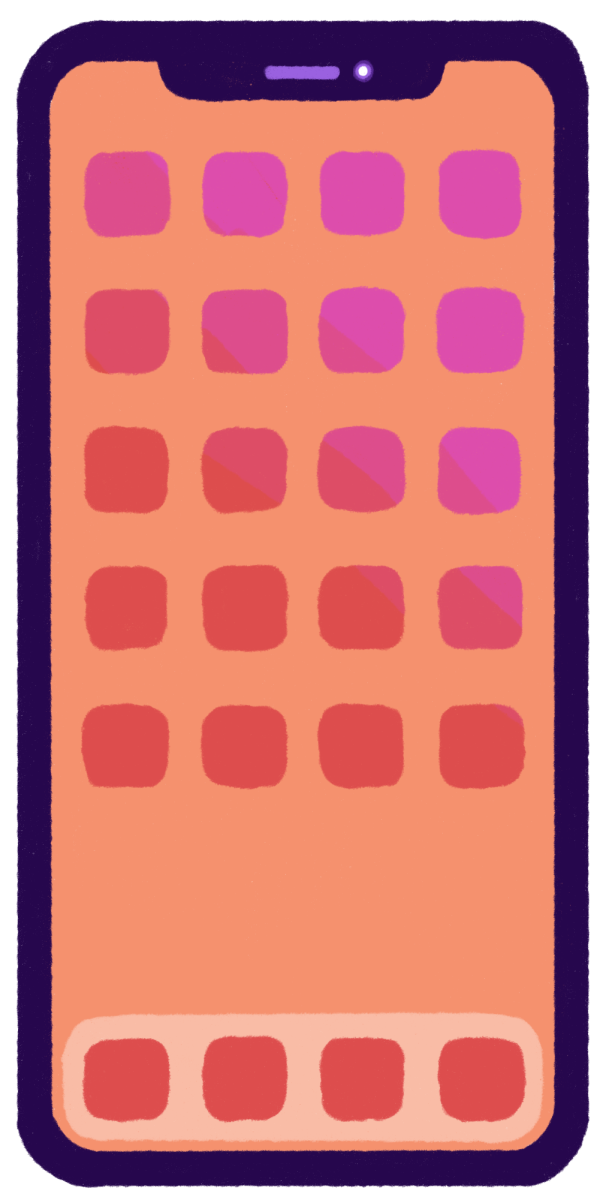This school year, LASA introduced a new policy that controls students’ cell phone usage. The cell phone policy was made school-wide and required students to put their cell phones in a designated location to restrict usage.
Since the COVID-19 pandemic, Austin Independent School District (AISD) schools have increased their usage of BLEND, and students have become more dependent on technology for learning. However, according to National School Safety and Security Services, technologies can serve as distractions or cause more innovative cheating methods. Moreover, following the aftermath of the pandemic, teachers had a rough time returning to teach students who are wrapped up in their phones rather than the lesson. Jessica Fisher, an art teacher at LASA, has witnessed this firsthand.
“I noticed this a couple of years ago, especially when we came back from COVID,” Fisher said. “Students would be watching movies and talking to their friends on their phones instead of connections between people that were around them.”
According to Neno December, the LASA freshman assistant principal and behavior coordinator, if all students are increasingly attached to their screens, social interactions between students will diminish. Therefore, December believes the phone policy is the solution.
“Teachers have been saying this for a while now, especially in the past two to three years, that they’re noticing a lot more students in the cafeteria, for example, glued to their phones instead of interacting with one another,” December said. “Instead of hanging out outside and playing something for 10 to 15 minutes or doing something together, it’s more like sitting and just playing games or doing social media.”
According to December, both administration and teachers felt like there are less physical interactions between students after the pandemic. He explained that they attribute this to many students wanting to be on their phone rather than talking with their friends.
“With smartphones and access to social media in particular, there’s so many studies over this showing that even with adults,” December said. “So it’s not just with students, that it does become not only a primary distraction tool, but also all the things that you come across in social media start having an impact on your overall well being. If you’re paying too much attention to politics and you’re on X or Facebook… you might be getting a lot of information that you don’t necessarily like and then that is just driving you crazy.”
People are unable to control what they see on social media and not everything on social media is the truth. According to Yale Medicine, it could be harmful to one’s mental health if they were to believe everything in social media posts.
“If you can’t control yourself, you start assessing yourself in relation to other people that you don’t know that you may come across like Facebook, Instagram, Snapchat, or you name it.” December said. “And then that ends up affecting people’s self perception of themselves in relation to these other people, but it’s like you don’t even know who these people are. They could be using filters, and now you’re looking at their physical level of beauty, and then you’re comparing it to yourself [and saying,] ‘Oh, I don’t look like that,’ and now you start feeling bad for whatever reason.”
December believes that social media is a large contributor to the damage of phone usage. However, AISD does not directly restrict social media, only physical access to students’ phones. As a result, December explained that though phone usage is more complex than just taking away physical access, the hope is that by further adjusting the phone policy based on student responses to it, they are taking a step towards increased student interaction rather than being on their phones.
“We can further tweak [the cell phone policy] to see what needs to be done because the whole purpose of it is really multifold or multifaceted,” December said. “One, we want students to be more attentive in the classroom… Two, we want to further develop their social skills, how to communicate and interact with one another.”
According to December, the cell phone policy intends to nurture an environment where more meaningful interactions between students can happen on top of reducing sources of distraction from the classroom. Fisher added that, so far, the cell phone policy has been successful in creating a less screen-reliant environment.
“I definitely think [the cell phone policy] has made a noticeable impact, there are more students working in the classroom, they are more on task,” Fisher said. “They are having conversations with the people at their table instead of putting their head down and watching a movie.”
According to December, many teachers and staff have seen the positive effects of the cell phone policy. He added that they believe cell phone policy reduced distractions during class and encouraged more social interactions.
“There’s a more social level of activities taking place between students,” December said. “Even in the cafeteria, I don’t think I’m seeing as many students on their phones as I probably did last year. Because even in the lunch line, you would often see a lot of students just glued to their phones, and I’m not really seeing that as much.”
According to junior Hanxiang Mu, although there’s initial success, the cell phone policy could be even more harshly enforced. He explained that he still sees people with their cell phones during class, which he believes can lead to potential distractions the student’s own learning environment
“[The cell phone policy] is only effective to those who actually listen to the teachers and actually put their phone away,” Mu said. “I have classmates who don’t really listen to the teacher and they just have their phones chilling in their pockets just like the old days.”
For now, December states the cell phone policy will stay as is. Noting a difference between the LASA policy and the policy of other AISD schools, December points out the more relaxed policy of LASA.
“…Other schools have gone as far as to [the policy being] you come in, you put your phone in a little bag, you put it in a locker or something, and then you do not touch it that entire day,” December said. “Whereas here, you still have that level of freedom where you can use your phone as you’re walking in the hallways from class to class. You can still use it during lunch. As of now it doesn’t look like we’re gonna go to that point because there is no need yet to go to that point, just because the current policy seems to be fairly effective.”
The cell phone policy is still new, and data is still being collected to analyze its effectiveness. For now, according to December, the policy won’t be going anywhere anytime soon.








